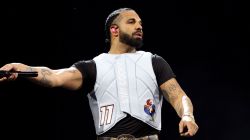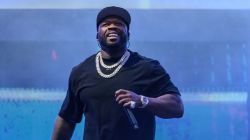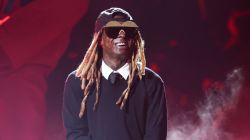Iconic b-boy Crazy Legs (born Richard Colón) is one of the true pioneers of Hip Hop culture. Speaking to the Bronx-based dancer feels like skimming through pages of a comprehensive Hip Hop encyclopedia. Dates, names and moments are seared into his memory and he recites them with a warm but precise conviction.
One of the original members of the infamous Rock Steady Crew, Crazy Legs has been a fixture of New York Hip Hop culture since the late 1970s.
Although there are four elements of Hip Hop: deejaying, breaking, emceeing and graffiti writing, as rap has continued to grow over the years, the emceeing element of Hip Hop has become the predominant face of the culture and has often left the other elements outside of the public eye. But breaking never disappeared.
In the 1990s, Crazy Legs re-birthed the Rock Steady Crew with a focus on the positive impacts it can have on the culture and the community. Since then, the Olympics is working to induct breaking as an official sport.
HipHopDX checked in with Crazy Legs to discuss his introduction to breaking, Hip Hop’s commodification and the often forgotten but undeniable influence of Puerto Ricans in the culture’s early days.
Crazy Legs: The term breakdancing doesn’t come from Hip Hop. Real b-boys and people who are true practitioners of it and people who are knowledgeable about the history don’t use the word breakdancing because the word came from an outsider.
HipHopDX: Can you explain to me how you got introduced to breaking?
Crazy Legs: Although I had seen breaking in like 1976, I saw my brother Robert Colón and DJ Afrika Islam comparing moves in front of where I lived on Garfield Street in the Bronx. They dropped down on the concrete and I was just totally embarrassed by watching my brother throw himself down on the floor. I put my head down in shame and wondered why my brother is embarrassing my family by throwing himself down on the floor like that. About a year later, my cousin Lenny Len took me to a park jam on Crotona Avenue in the Bronx by 180th Street.
At the age of 10, he brought me to that jam and I was just blown away. I fell in love with everything that was happening. I’m 10-years-old but I felt like I was born all over again. That’s the moment I came to life. And this was before Hip Hop was even called Hip Hop — it didn’t even have a name yet. I just fell in love with what I saw. I tried it that day with my bummy ass clothes. I came from a really poor family and we didn’t have the opportunity to keep me in sports and all those things that I really wanted to do. Breaking just came to be something that didn’t cost anything, I need a pair of sneakers and a good floor. I fell in love with it right there. It allowed me to be competitive. It allowed me to focus on something that I really loved and that gave me life.
HipHopDX: What were those jams like at the time? What were the people like?
Crazy Legs: It was black and Puerto Rican. Contrary to popular belief, there was a huge Puerto Rican population within Hip Hop during those. I saw people comparing tags, tagging on the walls, people dancing, breaking, doing different types of dances that existed. You went to a party you heard MCs, you heard DJs, they would breakbeats for the b-boys and b-girls to get down and it was curated in a manner that allowed everyone to enjoy themselves. Everyone at that time appreciated all the different elements of Hip Hop. What is predominantly known as Hip Hop today is really just the rap scene for the commercial aspect of it. It was definitely a lot more honest and pure back then, and in order to actually be considered dope at any element of Hip Hop, you had to actually put your reputation on the line by being in competition. There were no marketing schemes or anything like that. It’s either you were dope on the spot and either won a battle or lost a battle.
HipHopDX: You hear about beef between writers at the time, was there beef between b-boys?
Crazy Legs: Nah, here’s the thing. That concept of beef was about disrespect. Disrespect in graffiti comes from people going over each other or people being straight-up assholes. With breaking, you had the same type of wild people involved, but we happened to love the dance so much that when you were battling, it was really about the battle. It was more than likely you had stick-up kids on both sides. It wasn’t the kind of situation where you go in there thinking we’re gonna start a fight because you had to be worried about what someone was carrying on them at that time. It was really about the battle. The idea of battling to take the place of fighting—that was never true. If you wanted to become a dope b-boy, you had to develop your craft, and you were developing your craft, that means you were spending less time doing bullshit. But, at the end of the day, if you were a b-boy or b-girl and you’re practicing for six hours a day and you’re coming from a poor family, after those six hours you’re starving. Then it’s like, man I might have to catch a victim, I might have to go rack up in the store, steal some food or whatever it was. People were poor and people didn’t have welfare. We were looking at desperate social and economic times.
HipHopDX: At those times, did you see breaking as an opportunity to make some money or potentially make a career?
Crazy Legs: If you ever look up the Bronx and look at what was happening during those days, that’s an easy answer. There was no lane of opportunity for us other than ghetto celebrity status. There was no lights on Broadway for us, there was no silver screen for us–nothing like that existed in terms of an opportunity or path. The only way you could possibly make money is if you met up with another crew and each person put up three dollars per person, you could double your money based on which crew won that battle.
HipHopDX: Can you tell me about the early days of the Rock Steady Crew?
Crazy Legs: A lot of people believe that I was the one who started Rock Steady Crew and that’s not true. Two guys by the name of Jimmy Dee and Jimmy Lee are the ones who started Rock Steady. They were also originally part of the Bronx Boys. The Bronx Boys also had a lot of graffiti writers in it. A lot of these writers were really into Bombing and getting up and all that stuff. But Jimmy Dee and Jimmy Lee were really into breaking instead of writing. So Jimmy Dee and Jimmy Lee were always known for battling. They would say, ‘you guys stay steady battling.’ Breaking was also known as ‘rocking.’ They ended up calling themselves Rock Steady Crew. I was not part of the formation of it. Myself and my cousin Lenny Len became members, two years after it formed, and we were the last two people put down with the original crew of Rock Steady.
Crazy Legs: Rock Steady was also a wild crew. My introduction to Rock Steady was literally–I met the dudes at a party and they took me to go snatch a purse. We were absolutely unsuccessful that night because no one in The Bronx was walking around in those hours of the night. You live and you learn and you became wiser. In the ’90s I realized for the rebirth of Rock Steady in the ’90s, I wanted to change things in terms of how people got into Rock Steady. I made it a requirement of having to be in school — you have to be doing well, otherwise, you get kicked out. I wanted to flip things and really change that whole concept of how someone would get into a crew. Of course, your skills would have to be on point and the relationships have to be good with the crew. One of the things we were missing growing up as kids within our world of Hip Hop was that no one was pushing education on us.
HipHopDX: Janette Beckman told me about the first Hip Hop show in London in 1982 and seeing you. Can you tell me about that show?
Crazy Legs: Since we never set out to be performers, this is all stuff that fell in our lap. We didn’t have aspirations of becoming superstars or world travelers or anything like that. It wasn’t anything we thought would be attainable just based on limited resources and you’re looking at times that were a real struggle. We were more about the idea that we would be able to brag that we went there. While we were there, we had no real appreciation for what was going on. Even when we danced in front of an audience, we were really dancing for ourselves and the idea of how we looked to each other and not how we looked towards the audience. We would go to places and be like how can we get some weed [laughs]. They would say hey we’re gonna take you to the Eiffel Tower, we’re like ‘Nah, take us to the hood.’ We just wanted to be around people like us.
HipHopDX: When did you realize that Hip Hop could really be used as a tool to make a change?
Crazy Legs: In the ’90s. Afrika Bambaataa was the one in the ’90s who told us to use Hip Hop as a tool. In the ’90s, quite a few of my friends had passed away. My best friend who went by the name of Buck 4, he was actually murdered. When that happened, I also was caught up in some things that I won’t get into now. But it got to a point where I had to step back and look at everything. When I was looking at everything I was like, “Wow. There’s lots of people dropping off who made major contributions to an industry and they’re never going to get recognized for it.” I didn’t want that to happen in vain. I started doing volunteer work in the South Bronx, three days a week for three years. I worked with kids, aged eight to 16, where I was teaching dance, I was throwing events, I was throwing battles. I wanted to reignite the dance scene within New York and give these people to perform and compete and feel like what I felt growing up.
HipHopDX: As more money came in and businesses and corporations realized the potential for commodifying Hip Hop, how did that impact breaking?
Crazy Legs: The people who owned these clubs had no use for breaking. It became a thing where they wanted to have people in there who were part of the rap industry because that’s something that can be mass-produced that’s something that can draw bigger crowds. We kinda got pushed to the back of the line. That was a big slap in the face to us. But we empowered ourselves. We became the dictators of whether this would live or not. What we do now is embedded permanently in the culture. We’re making it to the Olympics. We have events like Red Bull BC One. I think graffiti and breaking are the only elements of Hip Hop that are test proven when it comes to the media saying, ‘oh that’s not cool anymore.’ deejaying and rap are not test proven at all. If the media said that it’s played out and dead, what would rap and DJs do? Would they survive on their own? Would they create their own outlets?
This isn’t to bash rap, because that’s still the word of the people by the people. It’s just never faced what we faced.
HipHopDX: Your commitment to putting the history of Puerto Ricans in Hip Hop back in the spotlight is really unique. Why is that important to you?
Crazy Legs: It’s real simple: we were there, we contributed. If you look at the first presentation of Hip Hop to the downtown community and the documentation of it you will see that it was predominantly, on those flyers and in the press, b-boys were Puerto Rican — straight up. If people knew their history and realized what the launching pad was for Hip Hop, I’m sorry but it wasn’t rap. Because rap didn’t support the rest of the elements once they got their lane.
Follow Crazy Legs for more b-boy content on Instagram @crazylegsbx.
[apple_news_ad type=”standard”]











Great article
Great article and video, love the interaction with the children, go Crazy Legs
Hip Hop Legend. Nothing else needs to be said.
He corny af
this man has been contributing to hiphop for nearly 40 years, shut your ignorant ass up
“Katonah” Avenue…LOL it’s Crotona Avenue!!!!! Who the hell edited this?!??
HIP HOP!!!
respect to the legendary Crazy Legs!!!